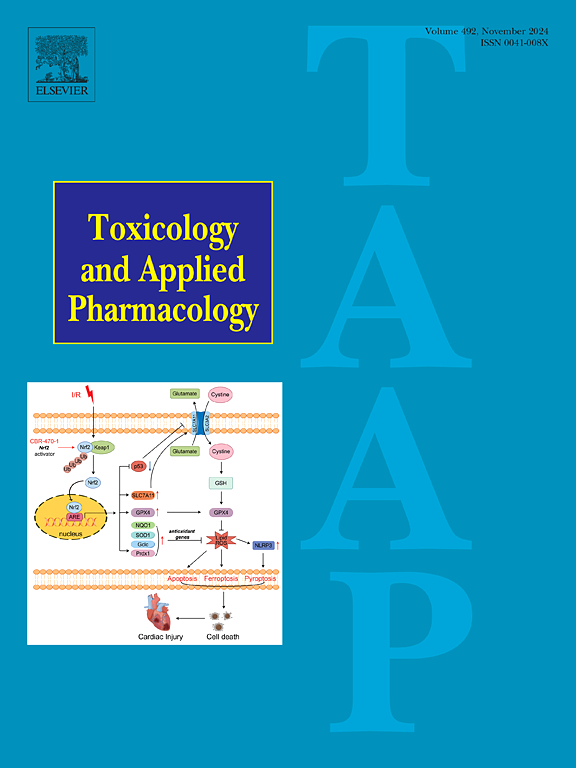Metabolomics based early warning model for acute kidney injury risk in patients exposed to diquat
IF 3.3
3区 医学
Q2 PHARMACOLOGY & PHARMACY
引用次数: 0
Abstract
Acute kidney injury (AKI) is one of the most important indications of severe clinical symptoms in patients with diquat poisoning and is closely related to poor prognosis. However, current studies have rarely focused on early warnings of diquat-related AKI, which is not conducive to the treatment of patients with early clinical diquat poisoning. In this study, untargeted plasma metabolomics was employed to reveal the differences between diquat-poisoned patients with and without AKI, as well as between patients and healthy volunteers. The results showed that 48 metabolites were significantly changed in the patients, among which 3-hydroxybutyrylcarnitine, SAICAR, dodecanoic acid, and tetrahydrofolyl-[Glu](2) could be used to effectively differentiate the above three groups. Based on the ratios of the first two metabolites and the ratios of the last two metabolites, a decision tree model for the early warning of diquat-induced AKI was established with an accuracy rate of 88.7 %. This model provides great support for accurate clinical diagnosis and intervention regarding the AKI risk of diquat-exposed patients.

基于代谢组学的diquat暴露患者急性肾损伤风险预警模型。
急性肾损伤(Acute kidney injury, AKI)是地奎特中毒患者严重临床症状的重要指征之一,与预后不良密切相关。然而,目前的研究很少关注地奎特相关AKI的早期预警,这不利于临床早期地奎特中毒患者的治疗。在这项研究中,非靶向血浆代谢组学被用于揭示diquat中毒患者与非AKI患者之间以及患者与健康志愿者之间的差异。结果显示,48种代谢物在患者体内发生了显著变化,其中3-羟基丁基肉碱、SAICAR、十二烷酸和四氢叶酸-[Glu](2)可有效区分上述三组。根据前两种代谢物和后两种代谢物的比值,建立了diquat诱发AKI预警的决策树模型,准确率为88.7% %。该模型为diquat暴露患者AKI风险的准确临床诊断和干预提供了有力支持。
本文章由计算机程序翻译,如有差异,请以英文原文为准。
求助全文
约1分钟内获得全文
求助全文
来源期刊
CiteScore
6.80
自引率
2.60%
发文量
309
审稿时长
32 days
期刊介绍:
Toxicology and Applied Pharmacology publishes original scientific research of relevance to animals or humans pertaining to the action of chemicals, drugs, or chemically-defined natural products.
Regular articles address mechanistic approaches to physiological, pharmacologic, biochemical, cellular, or molecular understanding of toxicologic/pathologic lesions and to methods used to describe these responses. Safety Science articles address outstanding state-of-the-art preclinical and human translational characterization of drug and chemical safety employing cutting-edge science. Highly significant Regulatory Safety Science articles will also be considered in this category. Papers concerned with alternatives to the use of experimental animals are encouraged.
Short articles report on high impact studies of broad interest to readers of TAAP that would benefit from rapid publication. These articles should contain no more than a combined total of four figures and tables. Authors should include in their cover letter the justification for consideration of their manuscript as a short article.

 求助内容:
求助内容: 应助结果提醒方式:
应助结果提醒方式:


